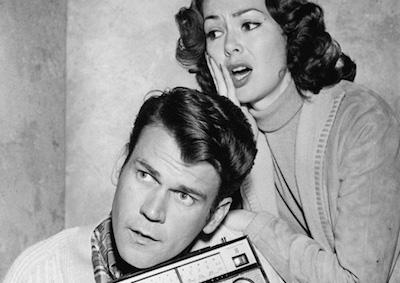CBS, 4/3/60
Airing on primetime network television in the spring of 1960, a full two years before the Cuban missile crisis confronted the world with the dire possibility of a catastrophic thermonuclear war, CBS’s Playhouse 90 presentation of “Alas, Babylon” provided a reported audience of 24 million viewers with a shockingly realistic dramatization of the potential horrors of the atomic age. Originally announced as the premiere installment of Playhouse 90’s opening season in 1959, the production was abruptly postponed, initially without formal explanation by CBS. While the network reported weeks later that the withdrawal was to accommodate the availability of actor Charlton Heston as a possible a lead in the production, the New York Times speculated that the delay of the broadcast was to avoid any negative repercussions that might impact a (then pending) visit to the United States by Soviet Premier Nikita Khrushchev.
Adapted by prolific Tony Award-winning, television writer David Shaw (Redhead) from the best-selling novel of the same name by author Pat Frank (nom de plume of journalist, Harry Hart Frank) the Playhouse 90 teleplay of “Alas, Babylon” unflinchingly portrays the tragic aftermath of a major nuclear conflict with the U.S.S.R, including scenes featuring a child being rendered blind from a violent bomb flash and a character severely disfigured by radiation burns. Narrated in flashback with solemn resignation by noir veteran Dana Andrews, who announces in the play’s first lines that he is already dead (à la Sunset Boulevard), the controversial drama was both lauded and criticized for its grim, daringly honest exploration of a scenario in which “92 percent of the world’s people were killed.” While the New York Times praised the presentation’s “remarkably convincing” performances by an all-star cast including Don Murray, Barbara Rush, and Rita Moreno, the paper decried the teleplay’s “moral cloaked in horror” stating that it was “impossible to comprehend what good purpose could be served by… [the] terror and hysteria depicted in the program.” Variety disagreed, proclaiming the broadcast as “powerful propaganda for peace.” —Mark Quigley
Director: Robert Stevens. A CBS Television Network Production. Producer: Peter Kortner. Screenwriter: David Shaw. Based on the novel Alas, Babylon by Pat Frank. Cast: Don Murray, Barbara Rush, Kim Hunter, Rita Moreno, Dana Andrews. DigiBeta, b/w, 90 min.
Preserved from the original master 2". Video transfer at the CBS Media Exchange. Use of "Alas, Bablylon" episode from Playhouse 90 courtesy of CBS Broadcasting, Inc.






 Mobile Navigation
Mobile Navigation

